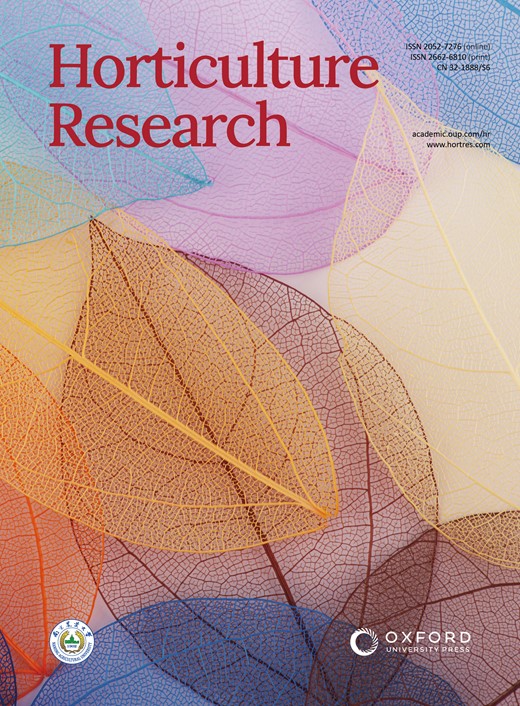A SlRBP1-SlFBA7/SlGPIMT module regulates fruit size in tomato
IF 8.7
1区 农林科学
Q1 Agricultural and Biological Sciences
引用次数: 0
Abstract
Fleshy fruits are vital to the human diet, providing essential nutrients such as sugars, organic acids, and dietary fibers. RNA-binding proteins play critical functions in plant development and environment adaption, but their specific contributions to fruit development remain largely unexplored. In this study, we centered on the function of SlRBP1 in tomato fruit and reported an unexpected finding that SlRBP1 controls fruit size by regulating its targets SlFBA7 and SlGPIMT. Here, the fruit-specific silencing of SlRBP1 was achieved by artificial miRNA which subsequently led to a marked reduction of fruit size. Cytological analysis suggested that SlRBP1 silencing decreased cell division and expansion of fruit pericarp. Those key genes involved in cell development were significantly repressed in SlRBP1 knock-down mutants. Furthermore, native RNA immunoprecipitation sequencing deciphered 83 SlRBP1-binding target RNAs in fruit, including two targets that are highly expressed in fruit: SlFBA7 and SlGPIMT, which are involved in developing fruit. Indeed, silencing either SlFBA7 or SlGPIMT resulted in fruit size reduction identical to that seen with SlRBP1 silencing. These results suggest that SlRBP1 modulates fruit size through its targets SlFBA7 and SlGPIMT. Our findings provide novel perspectives on the molecular mechanisms though which RNA-binding proteins control fruit size.SlRBP1-SlFBA7/SlGPIMT模块调控番茄果实大小
肉质水果对人类饮食至关重要,提供糖、有机酸和膳食纤维等必需营养素。rna结合蛋白在植物发育和环境适应中起着至关重要的作用,但它们对果实发育的具体贡献在很大程度上仍未被探索。在本研究中,我们以SlRBP1在番茄果实中的功能为中心,报道了一个意想不到的发现,SlRBP1通过调节其靶点SlFBA7和SlGPIMT来控制果实大小。在这里,SlRBP1的果实特异性沉默是通过人工miRNA实现的,随后导致果实大小显着减少。细胞学分析表明,SlRBP1沉默降低了果皮的细胞分裂和膨胀。SlRBP1敲低突变体显著抑制了参与细胞发育的关键基因。此外,通过原生RNA免疫沉淀测序,我们在果实中发现了83个slrbp1结合靶RNA,其中包括两个在果实中高表达的靶标:SlFBA7和SlGPIMT,它们与果实发育有关。事实上,沉默SlFBA7或SlGPIMT导致的果实大小减少与沉默SlRBP1相同。这些结果表明,SlRBP1通过其靶点SlFBA7和SlGPIMT调节果实大小。我们的发现为rna结合蛋白控制果实大小的分子机制提供了新的视角。
本文章由计算机程序翻译,如有差异,请以英文原文为准。
求助全文
约1分钟内获得全文
求助全文
来源期刊

Horticulture Research
Biochemistry, Genetics and Molecular Biology-Biochemistry
CiteScore
11.20
自引率
6.90%
发文量
367
审稿时长
20 weeks
期刊介绍:
Horticulture Research, an open access journal affiliated with Nanjing Agricultural University, has achieved the prestigious ranking of number one in the Horticulture category of the Journal Citation Reports ™ from Clarivate, 2022. As a leading publication in the field, the journal is dedicated to disseminating original research articles, comprehensive reviews, insightful perspectives, thought-provoking comments, and valuable correspondence articles and letters to the editor. Its scope encompasses all vital aspects of horticultural plants and disciplines, such as biotechnology, breeding, cellular and molecular biology, evolution, genetics, inter-species interactions, physiology, and the origination and domestication of crops.
 求助内容:
求助内容: 应助结果提醒方式:
应助结果提醒方式:


